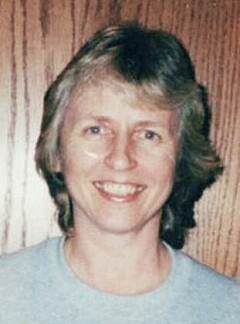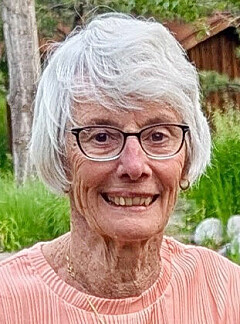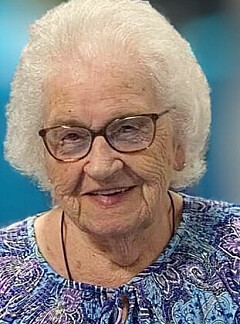Gathering the memories
Officers and key supporting members of the MCAHS include Jean Baker, seated left, secretary/treasurer Denise Wise, Peg Walker; standing, archivist Helen Shonk, Marlene Burton, grant writer Arline Mase and Marlene Deubner.
Lori Feeney
Tucked away in an unassuming-looking building along state Route 800 is the Mineral City Area Historical Society. Behind the door, members of the Mineral City Area Historical Society have been going about the business of preserving the town’s history.
Since forming in 2003, MCAHS has amassed a collection of historic records and memorabilia, all of which are on display for public viewing. Those who grew up in the Mineral City area might even find genealogical records to help trace the roots and branches of their family tree.
The MCAHS has found a home in a building that was occupied by the Mineral City Electric Light Plant from 1895-1916. The village still owns the building but rents it to the historical society for $1 a year.
Through the decades it also has served as council chambers and a sheriff’s satellite office complete with a holding cell. So as volunteers and officers of the organization go about the work of gathering memories inside the building, the exterior is getting some much-needed repairs, thanks to grants from the Rosenberry, Zimmerman and Reeves foundations.
“You could see light coming in the cracks, and that means moisture,” said Arline Mase, grant writer for the group.
Moisture and some types of lighting are the enemies of preservation.
The exterior has already gotten a fresh coat of paint, and there are plans to replace the outdoor sign and to make the building ADA compliant for handicap accessibility. Inside, a leaky ceiling has already been repaired and refinished by Cathy Orzak Ley.
Those things cost money, so MCAHS has to rely on grant funding and donations to augment their own fundraising projects.
Piecing together the past
Mineral Point, as it was named then, was founded in 1840 by Alfred Davis on 300 acres of land donated by George Leckner. A descendant of Davis, Neil Kwasnicka still lives in the village. It wasn’t long before the village was flourishing from the rich clay and coal deposits, the yields of which were shipped all over the country via the railroad that ran through the south end of town.
Davis owned and operated the first coal mine starting in 1850 and convinced the Cleveland & Pittsburgh Railroad to put a rail line in so coal, clay and other minerals could be transported for sale on the market.
By 1870 the population of the village reached 400. In its heyday the village had its own newspaper, boarding house, banks, drugstore, steam cider press, sawmill, hospital, hotel and an opera house where Will Rogers once performed.
The rest of the village’s 180 years of history simply won’t fit into the space allotted here. To learn the rest of Mineral City’s history, one will simply have to visit the historical society, where exhibits include the following:
—Photos of village founders and other prominent people through the years.
—A cabinet salvaged from the Continental Hotel fire, refinished by Pinky Brinkman and donated by Roger Anderson Jr.
—A miniature village made entirely of match sticks by resident Tim LaFollett.
Steps toward the future
As MCAHS moves into the future, taking a moment to look at all they’ve accomplished seems in order. The current location allowed the society to create a museum room, display room, historical archives and storage area. Other noteworthy accomplishments include the following:
—Acquiring 14 filing cabinets, nine bookcases, five display cases, a large meeting table and 19 chairs paid for by grant funding.
—Collecting local artifacts along with newspaper clippings covering weddings, anniversaries, obituaries, church events, local tragedies and triumphs.
—Creating tags for photos that identify people in the photos and acknowledge the donors.
—Creating a quarterly newsletter for members.
—Participating in community events to help spread the word.
—Establishing a collection of Mineral City and Tusky Valley yearbooks. Annuals are still being sought for 2015, 1964, 1997, 1999, 2000, 2001, all years from 1916-39 and 1943-45.
Get involved
There are a number of ways to help the historical society continue its valuable work. The MCAHS will hold its annual garage sale on Friday, June 21 and Saturday, June 22 from 9 a.m. to 3 p.m. All proceeds from the sale will be used to preserve the area’s history. Monetary donations are welcome year round, and MCAHS continues to accept donated items for display.
To become a member for $10 a year, download a membership form on the Mineral City Area Historical Society Facebook page or call 330-859-2533.
“We hold an open house every year, and we tend to get members from that,” founding member Jean Baker said. “It think once people stop in and look around, they see the value of what we’re doing.”
In addition to monetary donations, the historical society is always seeking items to add to its ever-growing collection. The most recent contributions are shown at society meetings on the first Thursday of each month at 7 p.m. before finding a permanent spot among the other items.
The Mineral City Area Historical Society, located at 6826 N. High Ave., is open to the public on Wednesdays from 9 a.m. to 1 p.m. Appointments also can be scheduled at other times by calling 330-859-2533.


















































